HABEY BIS-6922 Fanless Ivy Bridge Industrial PC Review
by Ganesh T S on August 13, 2013 9:00 AM EST- Posted in
- Industrial PC
- Ivy Bridge
- Passive Cooling
- Habey
Performance Metrics
The BIS-6922 review unit's i7-3720QM has the HD4000 GPU inside, and its performance with respect to HTPC metrics is quite well known. Given the target market of the system, we will not comment on its HTPC capabilities any further in this review. Instead, we just present benchmark numbers from our standard test suite for low power desktops / industrial PCs. Note that some of the benchmarks are pretty recent (such as x264 v5.0 and 3D Mark 2013). Loaner samples haven't been tested with these new benchmarks. Therefore, the list of PCs in each graph are not the same.
Windows Experience Index:
Similar to the Aletuia Relia, the BIS-6922 also scores 6.6 in the Windows Experience Index. It is primarily held back by the performance of the HD4000 GPU. On deeper analysis, we find that the Intel SSD 330 scores lower in the primary disk category compared to the Relia's Crucial mSATA SSD.

The SSD is easily swappable if the user desires, and Habey is also pretty flexible in responding to particular customer requirements with respect to various components. That said, the Intel SSD 330 is definitely good enough for casual desktop use. Most industrial PC applications are not disk-intensive, so the SSD 330 at default is not a bad choice for the BIS-6922.
Futuremark Benchmarks:
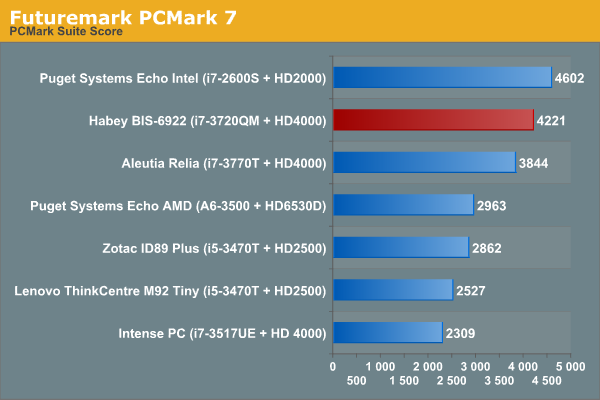
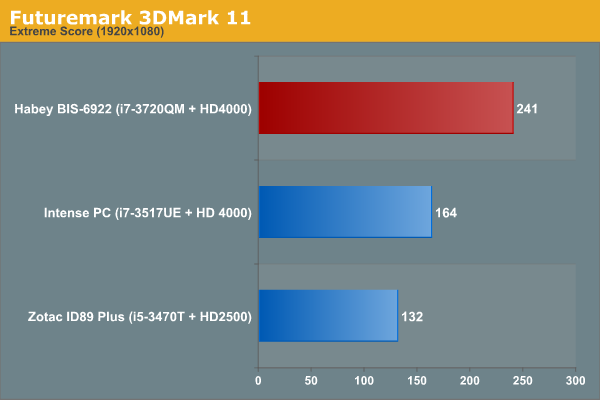

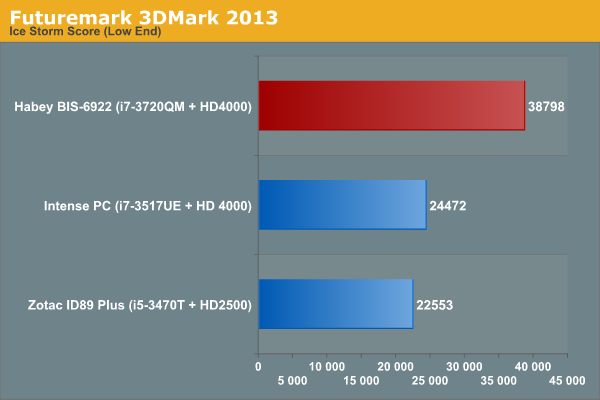
Miscellaneous Benchmarks:
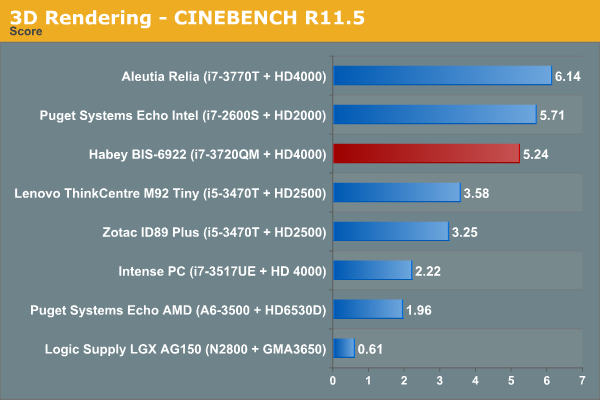
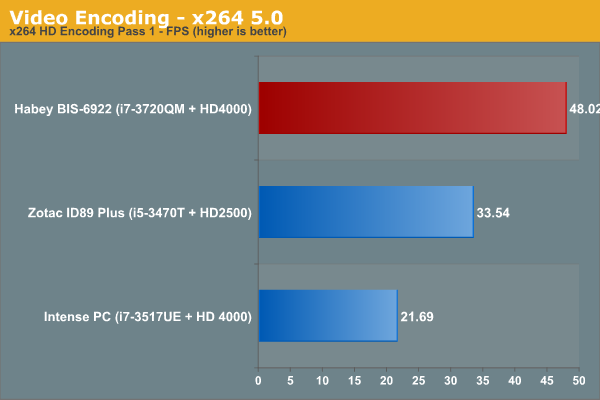
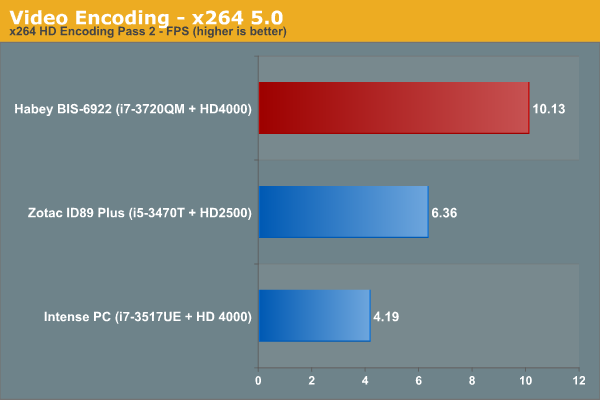










63 Comments
View All Comments
lmcd - Tuesday, August 13, 2013 - link
And if they wanted the CD they can just set up with an external CD drive, which oftentimes they already have on-hand. Once external CD drive can serve a whole setup team and any of the different industrial pc models.airmantharp - Tuesday, August 13, 2013 - link
I think the USB stick is the better way to go; how would it look for a retailer to ship a system with a CD in the box and no drive to read it? That's the kind of thing the government does :).evilspoons - Tuesday, August 13, 2013 - link
Appreciate seeing the reviews of industrial equipment. I use machines similar to this on a regular basis at work (electrical engineer doing industrial automation). The PCs are used to run HMI software for motion controllers, as well as NI's LabView.This specific model doesn't meet my needs in a few ways - lack of serial ports and lack of 24 V DC input power, but it's good to be aware of other brands.
I'm curious how my usual choice would stack up against this. I've used dozens of Advantech UNO-21xx units, mostly the UNO-2172 with a slow-as-hell Celeron M 1.5 GHz CPU, but they've recently released the UNO-2184G that gets you all the way to some sort of second-gen Core i7. Haven't tried one yet though.
kmmatney - Tuesday, August 13, 2013 - link
You can always use USB-RS485 or USB-RS232 converters. We've been using converters from EasySynch and they work great.alex_alfanet - Friday, August 16, 2013 - link
evilspoons, I found from this company this option PRO-6820, may be it's what you need. it has 12v-28v dc option and 4 serial ports.ddriver - Tuesday, August 13, 2013 - link
Hey, maybe it is just me, but when I hear "industrial equipment" I imagine durable, overbuilt, mission critical hardware...The thermal performance is unacceptable, and I doubt that hardware will last more than 2 years before frying itself. Certainly not something I would rely on.
A shame, considering how those rounded radiators really invite the idea for a pair of nice low RPM cylindrical turbine fans that would keep it nice and cool.
Rick83 - Tuesday, August 13, 2013 - link
Well, I'm not sure anyone has done long-term thermal testing of this hardware quite yet. Additionally, I doubt that the usual scenario will see it running at full load for more than minutes at a time. If it were run full throttle for extended amounts of time, I would expect the PSU to fail first.If you run this device 24/7 at full load, you will know this in advance, and have cooling installed inside the cabinet. But clearly, this was not designed for this kind of permanent load. Still, the cooling keeps everything within spec, so if anything goes wrong inside the first two years, you'll be covered by warranty.
airmantharp - Tuesday, August 13, 2013 - link
Based on how quickly it cools down, having any real airflow over it would likely mitigate most cooling concerns, even in the rare instance of a 100% sustained load over time. I think ddriver is over-dramatizing the issue quite a bit; as you (Rick83) say, the PSU would be likely to fail first, and anyone using this system would be aware of the thermal constraints beforehand and would build the rest of the 'system' with that in mind. And that wouldn't be very hard to do.ddriver - Monday, August 19, 2013 - link
Considering the outside of the case hits 70 degree C and it is even hotter inside, that already puts most of the components outside of their optimal operating temperatures, dramatically increasing the chance of errors or failures. Industrial strength equipment never operates on its limits and mandates significant headroom.God forbid this thing gets direct sunlight while under load...
cjs150 - Tuesday, August 13, 2013 - link
Very interesting. I have a fanless HDPLEX case running an i7-3770T. Running at full load for about 45 mins it tops out at around 92C core temperature (room was 23C). I use it as an HTPC so other than encoding a Bluray it rarely gets stressed to that level. Hdplex have improved the case since I got mine so may well run a few degrees cooler with the new case.I believe that the best way to drop core temperature is to remove the IHS, replace the crap intel thermal paste with something decent and refit IHS. I could not be bothered, but worth considering